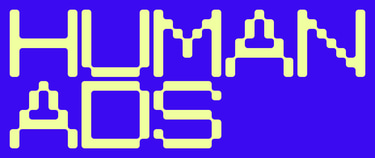FIGHT OVER A CAKE RECIPE
Guest post by Alexandra Marginean & Sabrina Tosi
Influencer Law Clinic series
12/4/20213 min read
Two online vloggers known for their culinary recipes, Jamila Cuisine and Laura Laurenţiu, went to trial in Bucharest for the éclair recipe on the tray.
In May 2019, Jamila opened the trial claiming that Laura Laurențiu abusively reported her newly-posted video on her YouTube channel where she was presenting a recipe of éclair on YouTube. Laura did so on the grounds that her copyright for the éclair recipe had been infringed. As a result of the reporting, Jamila’s video was removed from YouTube. The issue, however, which Jamila brought up in court, is that the video was created as part of an advertising campaign and that consequently she suffered damages of 2,000 euros. Furthermore, Jamila asked for an additional 1,000 euros for moral damages by arguing that ‘the defendant failed to take into account the influence she has and has incited, through her post on Facebook, the public to perceive the plaintiff as a ‘recepy-thief’. [1]
The defendant, Laura Laurențiu, claimed that the éclair recipe belonged to her and reported that this specific recipe was totally different from the classic éclair recipe. She claimed that ‘the cake thus conceived is split with the knife in squares, and outside the type of dough has no connection with the classic éclair’’. According to the defendant, ‘the mere fact of reporting the video to the YouTube network did not automatically lead to the interruption of the video distribution. The decision to discontinue its broadcast on YouTube is part of the channel’s regulations (as they will be explained later in the blog), and thus there is not an unlawful act’. [2]
The Bucharest court rejected the applicant’s request and ordered her to pay 1,000 euros in court expenses. However, the decision is not final. The Court held that ‘the use of the same name by both parties allowed YouTube platform algorithm to apply the Terms and Conditions accepted by all members. Thus, noting the similarity between the two videos, the platform considered necessary the provisional suspension of the later video, published by the plaintiff. Therefore, the General Court rejected the application of the claimant, Jamila Cuisine, due to the fact that the copyright invoked does not apply to the facts of the present case. Furthermore, the court rejected the applicant’s claim for moral and monetary damages by possible interference and the request to oblige the defendant to publish the judgment on his own Facebook page and in a widely-used newspaper. [3]
Fundamental to understanding the judgment is the management system on copyright infringements that YouTube makes use of. In case of an alleged copyright infringement, the online video sharing and social media platform offers two main routes: a copyright owner can either a) issue a Content ID claim or b) issue a takedown request. The former is usually automatically generated when uploading a video but can also be done manually if the owner has access to the Content ID tool. This automatic mechanism allows copyright owners to claim a video as copyright infringing and set a policy in order to track it by collecting stats, monetize it by placing ads and collecting revenue, or block it by making it unavailable in some territories. [4]
The second mechanism is the issuing of a copyright takedown. It requires the copyright owner to send or fill out an online legal complaint, also known as ‘the takedown notice’. If this is considered to be valid, YouTube does not analyse or substantially dispute it but will take down the video in order to comply with copyright law. The takedown is accompanied by a copyright strike which can be resolved by, among other ways, submitting a counter-notification to request YouTube to reinstate the video. The counter-notification is forwarded to the original claimant, who has 10 days to respond with evidence that they’ve taken legal action to keep the content from being restored by YouTube. [5]
In the éclair recipe case, the defendant, Laura, resorted to the second mechanism. Indeed she issued a takedown notice which led YouTube to take down Jamila’s video in the next 5 minutes. The platform based their decision on the similarity of identity between the two videos. Two days later, the applicant filed a counter-notification and was warned that she had 10 days to prove that she had started Court action against Laura. Since Jamila did not take any further action, the video was restored after a total of 17 days. The video being prevented from broadcast for the period of 17 days was indeed Jamila’s main claim during court proceedings.[6]
The éclair recipe case has brought forward to the national court the first case of copyright infringement on an online platform with regard to a recipe.
Moreover, it highlights the somewhat contrasting position of YouTube. On one hand, the platform enjoys wide discretion in deciding whether or not to remove a video from the platform which, as shown in the case, may have a big impact on the user’s revenue. On the other hand, however, the final decision on whether to delete the video is eventually completely at the discretion of a court and YouTube has little, if no influence on it.
[4] https://support.google.com/youtube/answer/2807684
[5] https://www.youtube.com/watch?v=4qfV0PRsCrs&list=PLpjK416fmKwRnRbv72ksHRYEknNSaAFkd
[6] English translation of the Bucharest Court – CV – Civil Section public meeting of July 12, 2019
